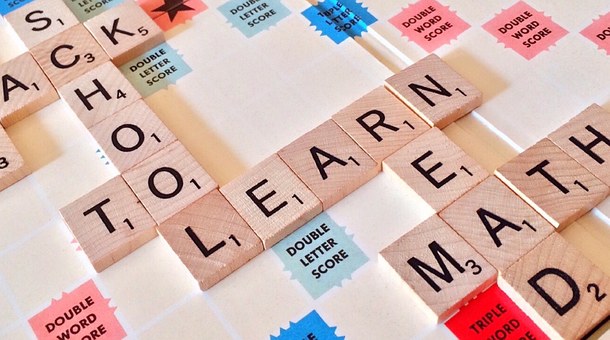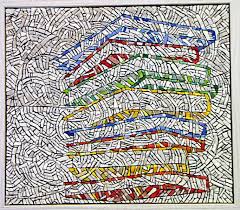What Is Structured Literacy?
Multisensory, structured language education is the most commonly endorsed and research-based approach for literacy education for students who struggle with reading. It includes methodologies like Orton-Gillingham instruction as well as programs based on those methodologies. Several years ago, the International Dyslexia Associated formally adopted the name “Structured Literacy™™” as an umbrella term to describe all programs that use a structured, systematic, and multisensory approach to reading (International Dyslexia Association).
While the term Structured Literacy™ may be new, the approach to teaching reading is not. Samuel Orton conducted groundbreaking research in the 1920s on multisensory, systematic instruction and documented its success in teaching students with reading difficulties. An extensive and growing body of research demonstrates that the Structured Literacy™ approach is effective in reading intervention for students with reading difficulties (Birsh, 2005). In addition, newer research shows that Structured Literacy™ is a more effective approach than whole language for all students, including those with typical reading abilities (Lorimor-Easley & Reed, 2019).

Although the principles behind Structured Literacy™ and the methodology themselves are not new, it is also not well-known within the general education community. In fact, many schools still use leveled readers with heavy picture clues to teach reading in both whole and small groups. Phonics has become more mainstream yet is often not explicit and systematic. Teachers and educators have the best interest of their students at heart, yet do not always have the professional knowledge and resources to deliver the most effective instruction.
In order to effectively remediate reading issues and teach reading, it is important to understand what Structured Literacy™ is and how it can be effective. First and foremost, Structured Literacy™ is structured. It is systematic and emphasizes phonological awareness, phonics, decoding and spelling along with morphology, fluency, and comprehension. Phonics follows a logical scope and sequence that explicitly teaches each spelling pattern.

Using the Structured Literacy™ approach, students are encouraged to use decoding skills and phonics patterns to sound out words, rather than guessing at words based on context or pictures. The logic behind this strategy is two-fold. First and foremost, even in early readers, the pictures are not always a reliable way to figure out a word. For example, if there is a picture of a duck in water with the sentences “The duck swims,” a student could come up with a variety of words that would make sense based on the pictures. Anything from “The duck splashes” to “The duck eats” could make sense depending on the illustration, but neither are correct. If students are taught proper decoding, they can read the word swim rather than guess at reasonable alternatives. A second reason that using the pictures is ineffective is that eventually the text becomes too complex to be encapsulated in an illustration. As students get older and text complexity increases, those who cannot decode often have few strategies to rely on and their reading level tends to not keep up with that of their peers who are able to use decoding strategies (Birsch, 2005).
As a reading clinician, I can tell you that the “check the picture” strategy is very rarely effective, even when texts have significant picture clues. I have had students make wild guesses that often do not even start with the same initial sound as the word they are attempting to “read.” For example, in a book I was recently reading with a student, the text said “They sat…” the student read the words “They ate…” which based on the picture, made sense however it was not the correct word and did not even have the same initial sound.

The Structured Literacy™ approach is also multisensory. This is a buzz word that tends to get thrown around a lot without full understanding of what it entails. In the Structured Literacy™ approach, multisensory means that it engages the visual, auditory, and tactile centers of the brain, often simultaneously. Students are encouraged to use manipulatives and movement to help reinforce sounds and spelling patterns. Some programs may use colored tiles or tapping sounds to incorporate movement. In addition, during auditory and visual drills, students are encouraged to trace letters using their index and middle finger while saying the sounds, letter names, and looking at the letter. This engages all three critical areas of the brain while learning and reinforcing letter sounds, names, and formations.
Another way the Structured Literacy™ methodology incorporates multi-sensory activities is by emphasizing handwriting and correct letter formation during instruction. Often students with reading issues as well as writing issues struggle to form letters. This extra load on their processing centers makes writing nearly impossible. By teaching explicit handwriting skills the load on a student’s working memory is decreased and they can focus on the content they need to write, rather than the writing process.

The Structured Literacy™ framework is also cumulative, meaning that skills are constantly reviewed and spiraled in so that students have adequate practice time. Once a student learns a skill, that skill is not dropped from explicit instruction until it has been fully mastered. For example, if a student is working on silent e words, once that lesson is over the reading clinician does not move on and stop practicing. The skill is spiraled into reading and spelling so that the student can review and internalize it in multiple forms and at both low and high levels of complexity.
A final key component (for the purposes of this blog at least) is that Structured Literacy™ is delivered by a highly trained professional. Effective Structured Literacy™ instruction requires more than an 8-hour professional development where you look through the curriculum. Our reading clinicians all have credentials that align with International Dyslexia Association standards for working with students with reading difficulties. They attend professional development and engage in reading and discussing current reading research. In short, they are experts in the field of reading intervention.
If you are looking for a high quality, one-on-one Structured Literacy™ program for a student or your own child, RW&C’s program may be the right fit for you. We offer reading, writing, and spelling remediation services. Our online program is flexible and built to fit your needs. Contact us today for more information.
Becky WelschRW&C, LLC
www.rwc4reading.com
Becky Welsch has a Master’s degree in K-8 Education. She is certified to teach in the state of Arizona and has special endorsements in the areas of English Language Learners and Reading.
Resources:
Multisensory Teaching of Basic Language Skills, Judith Birsch 2005
“Structured Literacy: A New Term to Unify Us,” International Dyslexia Association
“An Explanation of Structured Literacy, and a Comparison to Balanced Literacy,” Nina Lorimor-Easley and Deborah Reed 2019
Photos from www.pexels.com


